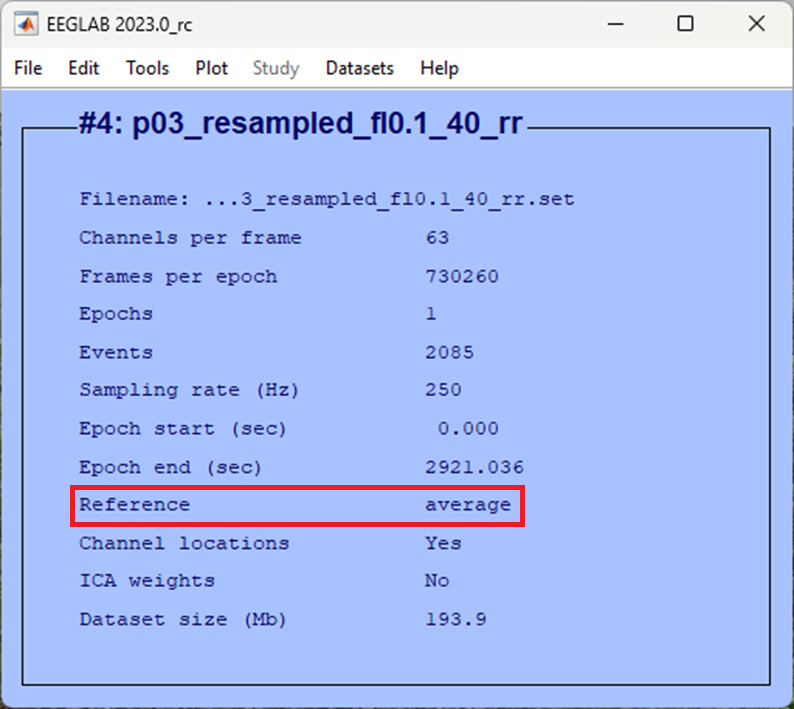Voltage is the measure of the potential difference between two measurement locations. Therefore, any voltage fluctuation we see at any given electrode is relative to measurements taken from another location. There is a lengthy debate in the literature about the appropriate reference to use for EEG analysis and it will depend greatly on the type of experiment you are running and previous research. However, increasingly, with high numbers of electrodes placed all over the scalp many researchers are choosing to use an ‘average reference’ – that is, the average voltage measurement taken across all electrodes is used as the reference point, rather than measurements taken from any one electrode.
How
To re-reference the data to the average reference in EEGLAB click:
-> Tools
-> Re-reference the data
In the pop-up that appears, click Compute average reference and select Ok.

You will then be prompted to name the dataset, make sure you also select the option to Save it as a file and append the name with an appropriate suffix, we used _rr to denote re-reference.

Your modification to the dataset should now be visible in the EEGLAB home window:

Test yourself
Question 1 | In EEG analysis, what does ‘’voltage’’ measure?
Question 2 | Why is re-referencing important in EEG analysis?